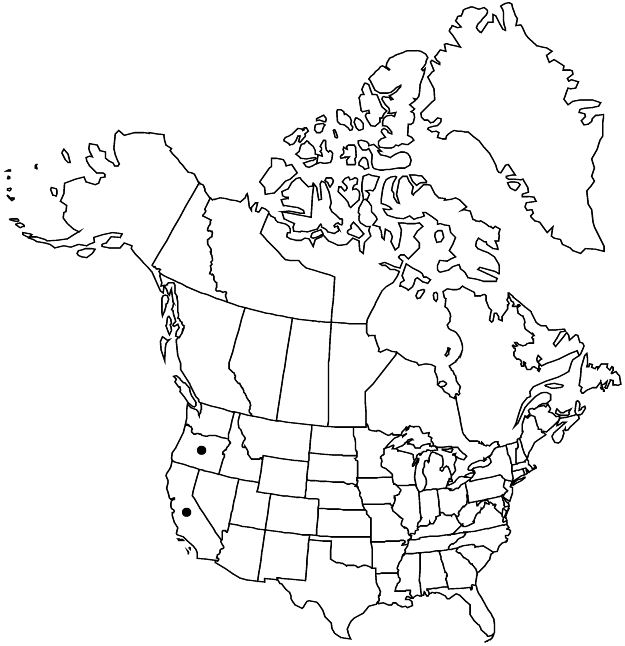Garrya buxifolia
Proc. Amer. Acad. Arts 7: 349. 1868.
Shrubs 0.5–2(–3) m, branchlets moderately strigose-sericeous, glabrate. Leaves: blade green abaxially, bright to olive green adaxially, flat to concave-convex, ovate-elliptic or obovate-elliptic to suborbiculate, 1–5(–6.5) × 0.9–3.3 cm, length 1.3–2.3 times width, margins flat, smooth, apex rounded to obtuse, abaxial surface densely strigose-sericeous, hairs antrorsely appressed, adaxial surface glossy, glabrous. Aments: staminate 5–7 cm; pistillate compact, internodes to 1 mm, unbranched, pendulous, 3–9 cm; pistillate bracts connate proximally into deep cup, at least at proximal nodes each subtending 3 flowers, triangular to oblong-acuminate, differing in size and shape from leaves, strigose-sericeous. Berries 4–6 mm diam., glabrous or sparsely strigose near apex, not glaucous.
Phenology: Flowering Mar–Apr.
Habitat: Serpentine, chaparral, yellow-pine forests.
Elevation: 50–2200 m.
Discussion
Garrya buxifolia occurs in northwestern California and southwestern Oregon. Its relatively narrow geographical range is essentially parapatric with that of G. flavescens where the two meet in northwestern California. Without observation of the diagnostic fruit vestiture, the green-glossy and completely glabrous adaxial leaf surfaces of G. buxifolia usually distinguish it.
Selected References
None.
